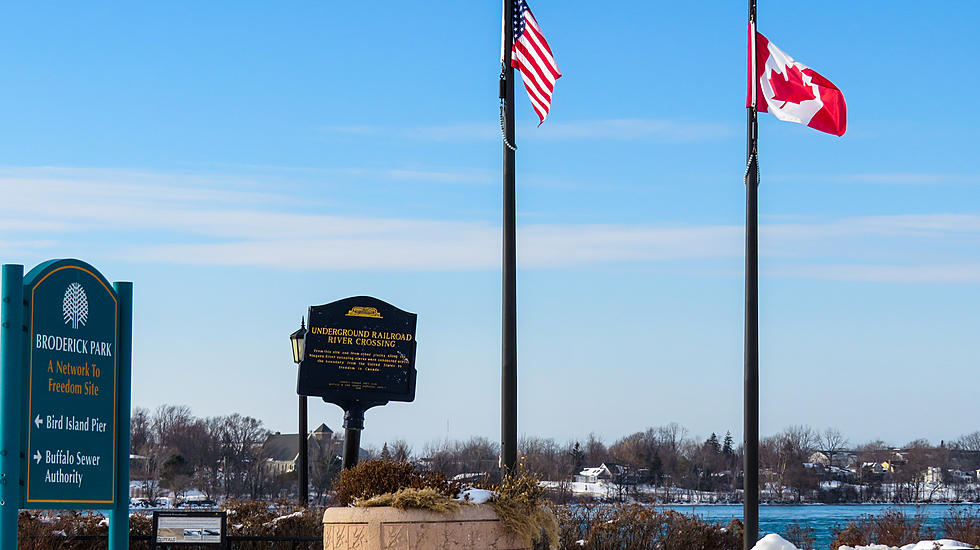![The Underground Railroad in Buffalo — A Photo Tour [PICTURES]](http://townsquare.media/site/11/files/2013/02/18-Broadway-Rand-Building-2.jpg?w=980&q=75)
The Underground Railroad in Buffalo — A Photo Tour [PICTURES]
As recent films Lincoln and Django Unchained remind us, America was no playground when the Fugitive Slave Act was law. African Americans were forcibly stripped of their very humanity; they were worth less than nothing and treated as just another piece of the furniture set.
Oddly enough, this horrendous period was the cause of one of Buffalo's greatest triumphs. On top of aiding in the creation of the Underground Railroad, escaped slaves found a peaceful living here; some African Americans were able to find steady jobs and own property in Buffalo, a tremendous landmark at the time.
Below, check out photos of several of the confirmed ex-Underground Railroad sites.
18 Broadway
Now standing as the Rand Building, 18 Broadway used to be a home and dye shop owned by abolitionist Lucas Chester until 1862. The original building has been demolished and rebuilt.
184 Delaware Ave.
184 Delaware Ave. used to hold a stable owned by Thomas and Maria Love. Now, it's the Avant Building, built in 1970.
329 Ellicott St.
It used to be the home of John Spencer Fosdick. According to his grandson, Harry Emerson Fosdick, John used to personally row escaped slaves across the river border into Canada. His home has long since been demolished, and the space is now occupied by Ferguson Electric Company.
Foot of Ferry Street
Another part of the Underground Railroad that served as a Canadian gateway. During slavery times, this spot was dock of the Black Rock Ferry, which transferred slaves over the border. Today, it's Broderick Park, along with an Underground Railroad historical marker.
300 Linwood
300 Linwood used to be the home of Morris Butler, which was built in 1857 and demolished sometime before 1930. The location has become a Buffalo medical office.
310 Main St.
The old site of the American Hotel. African American hotel employee Samuel Murray was notorious during his time for stealing food from the hotel kitchen and giving it to escaped slaves, and also leading them to the Black Rock Ferry.
Niagara & Pearl
Although no precise adress could be pinpointed, what is known about the intersection of Pearl and Niagara is that attorney/abolitionist George Jonson, based on his own diary, aided a family of African American fugitives by hiding them in a colored house around Michigan Street. Popular modern buildings around this area are the Main Place Mall, Rath Building and Family Court.
Oak Street "Above Broadway"
Homes were still without adresses during slave times, but Reverand Samuel G. Orton was known to live somewhere around Broadway and Oak, according to the 1837 Buffalo City Directory. He was remembered by his son, Proffessor Edward Norton, who described that one day, two sleigh-loads of negros were brought to his father's home in search of protection. His house was demolished sometime after that.
291 Oak St.
According to the 1860 Buffalo city directory, this was the home of bookseller H.H. Matteson. Louisa Picquet stayed here. It has since been demolished.
13 Pine St.
Home of William Wells Brown (1814-1884), known as "the fugitives' house," according to his daughter Josephine Brown. It has since been demolished.
Pine Street at N. Division
This spot was the home of George Weir, Jr, who singlehandedly received eight fugitive slaves and hid them in a "public house." The fugitives were successfully transported to Black Rock Ferry and shipped to Canada and their eventual freedom. The house has since been demolished.
If you'd like to know more about the Underground Railroad and its place in Buffalo history, BuffaloResearch.com has a fantastic guide (which we used to put this post together), compiled by Cynthia Van Ness.
Contributed by Jake Knott
More From 93.7 WBLK









